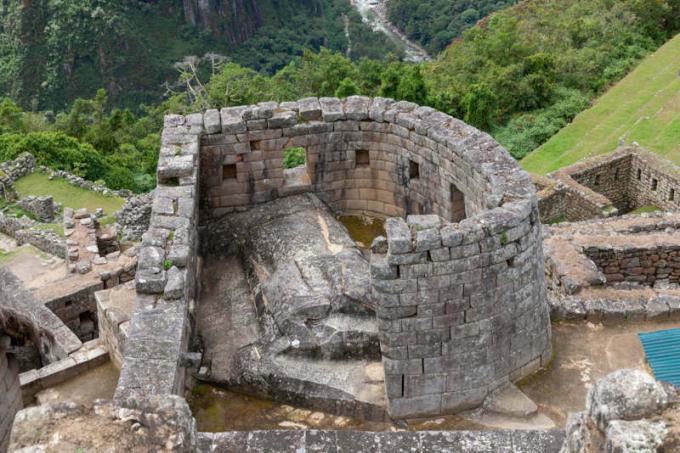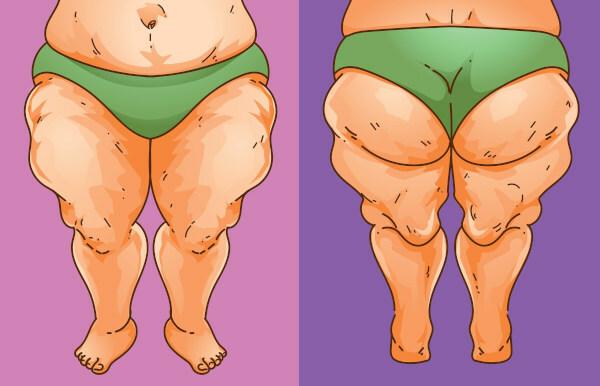Machu Picchu was a city built by the Incas in the 15th century, supposedly during the reign of Pachacuti. It was considered a refuge for the emperor, despite also having a religious role. It was sparsely inhabited, with a population of hundreds of people. It is located on top of a mountain in the Sacred Valley of the Incas.
The city was entirely built in granite, having been abandoned in the 16th century, most likely due to the Spanish presence in the Inca Empire. The city remained forgotten, being rediscovered in 1911. It is currently an important tourism center and is considered a World Heritage Site by UNESCO.
Read too: How did the Spanish conquer the Incas?
Summary about Machu Picchu
Machu Picchu was a city built by the Incas in the 15th century.
It is believed to have been built during the reign of Pachacuti.
It served as a refuge for the emperor and had religious importance.
It was abandoned by the Incas in the 16th century, most likely due to the Spanish conquest.
It has been considered a World Heritage Site by UNESCO since 1983 and is the most visited place in Peru today.
What is Machu Picchu?
Machu Picchu was a pre-Columbian city, founded by the Incas and located on top of a mountain in present-day Peru, being at an altitude of about 2400 meters. Today, the site is an important archaeological site, visited by thousands of tourists every year and evidence of the Inca lifestyle and ingenuity.
The ruins of Machu Picchu are in the Urubamba Valley, a place crossed by the Urubamba River, also known as the Sacred Valley of the Incas. The city was built near the city of Cusco, the ancient capital of the Inca Empire. It is estimated that the distance between the two locations is around 80 kilometers.
Popularly known as the “lost city of the Incas”, the term Machu Picchu is translated from Quechua (language spoken by the Incas) as old mountain. Researchers, however, have evidence that attests that the city's real name was Huayna Picchu and it is believed that this was how the Incas referred to this place.
Construction and rediscovery of Machu Picchu
The city of Machu Picchu It was built during the 15th century and was inhabited by the Incas until the 16th century, when it was abandoned. Traditionally, it was believed that the city was built during the reign of Pachacuti, the first Inca emperor, who remained in position between 1438 and 1471.
Historians claimed that the city was inaugurated around 1450, however more recent research suggests that this information may be inaccurate. This is because new evidence indicates that the city had been inhabited since 1420, suggesting that it had developed before the reign of Pachacuti and before the emergence of the Inca Empire.
In the 16th century, it was abandoned, remaining forgotten for centuries. Researchers believe that local inhabitants were aware of the existence of the Machu Picchu ruins, but the city was only rediscovered when the researcher American named Hiram Bingham The it found in 1911.
On that occasion he led an expedition that was looking for Vilcabamba, an Inca city that became known as the last capital of the Incas. Bingham believed he had discovered Vilcabamba, but it was only discovered by researchers in the 1960s.
Features of Machu Picchu

Machu Picchu was entirely built in granite stones, and a stone fitting technique was used that gives enormous support to the buildings. Historians have some doubts about the real purpose of Machu Picchu. It is not known whether it was a religious center, a place of refuge for the emperor or a small fortress.. This is because the ruins point to these three uses and, perhaps, the city fulfilled all three purposes.
The population of Machu Picchu was small, being between 500 and 750, and capable of housing a maximum of 1,000 inhabitants. Historians also suggest that entry into the city was limited to a very specific group of people. This is reaffirmed by the fact that some houses in the Urubamba Valley region had private roads that led directly to Machu Picchu. The difficulty in reaching the location reinforces the fact that only a small group was able to access it. Furthermore, security structures guaranteed that Machu Picchu was really a place that is difficult to access.

Historians know that the Inca emperor used to isolate himself after military campaigns carried out by the Incas and Machu Picchu used to be that location. Furthermore, the city had an important religious building, the Temple of the Sun, and experts believe that the The city could be related to Inti, the Sun god of the Incas, a deity closely linked to royalty and nobility inca.

Machu Picchu owned a wide variety of buildings. The city had buildings of a religious and military nature, residential buildings and those dedicated to local administration. There was also a place for astronomical observations, as well as space for plantations (the terrace of many buildings was also used for this purpose), canals that transported water, water sources, and a place where they were buried bodies.
See too: Moais — large humanoid-shaped stone blocks that the Rapa Nui built on Easter Island
Why was Machu Picchu abandoned?
Machu Picchu was built in the 15th century and suddenly emptied in the 16th century. This emptying from the city, possibly, is related to the Spanish arrival and conquest carried out in that century. Some researchers suggest that smallpox spread by the Spanish may have contributed to killing the population of Machu Picchu.
Historiography believed that the Spanish had not been aware of the existence of Machu Picchu, but some reports from Spaniards suggest that the Spanish were, indeed, aware of the existence of this city.
Machu Picchu as a tourist center
Currently, Machu Picchu It is an important tourist center in Peru, being the most popular place to visit in the entire country. Despite this, the Peruvian government has established strict visiting rules, stipulating that the maximum number of people who can go to the site per day is 2,500. Machu Picchu has been considered a World Heritage Site by UNESCO since 1983, and was elected, in 2007, as one of the Seven Wonders of the Modern World.
Sources
CARTWRIGHT, Mark. Machu Picchu. Available in: https://www.worldhistory.org/Machu_Picchu/.
CARTWRIGHT, Mark. Pachacuti Inca Yupanqui. Available in: https://www.worldhistory.org/Pachacuti_Inca_Yupanqui/.
CUMMINGS, Mike. Machu Picchu older than expected, study reveals. Available in: https://news.yale.edu/2021/08/04/machu-picchu-older-expected-study-reveals.
HEARN, Kelly; GOLOMB, Jason. Machu Picchu. Available in: https://www.nationalgeographic.com/history/article/machu-picchu-mystery.
GILL, N.S. Machu Picchu, Peru; Wonder of the World. Available in: https://www.thoughtco.com/about-machu-picchu-119770.
ROMO, Vanessa. Historians say explorers got it wrong: It’s not Machu Picchu, it’s Huayna Picchu. Available in: https://www.npr.org/2022/03/27/1089088061/machu-picchu-huayna-wrong-name.
SAUNDERS, Nicholas J. Ancient Americas: the great civilizations. São Paulo: Madras, 2005.

